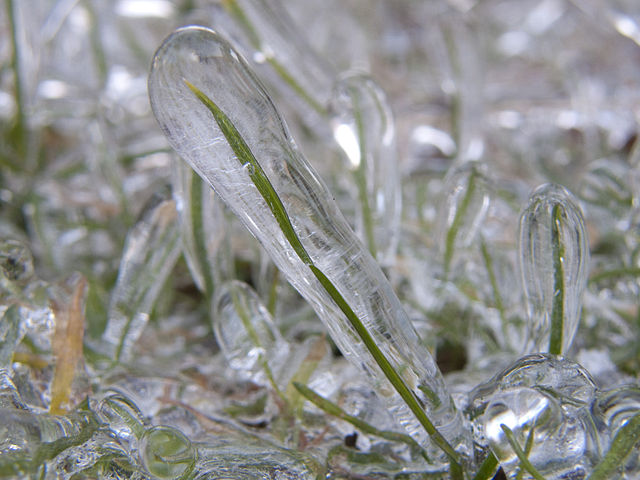Glaze or glaze ice, also called glazed frost or verglas, is a smooth, transparent and homogeneous ice coating occurring when freezing rain or drizzle hits a surface. It is similar in appearance to clear ice, which forms from supercooled water droplets. It is a relatively common occurrence in temperate climates in the winter when precipitation forms in warm air aloft and falls into below-freezing temperature at the surface.
Glaze on a blade of grass
Glazed tree branches are noted for both their beauty and their tendency to snap
Branch fully encapsulated in glaze
A forest in Moscow a week after an incident of freezing rain
Ice is water that is frozen into a solid state, typically forming at or below temperatures of 0 °C, 32 °F, or 273.15 K. As a naturally occurring crystalline inorganic solid with an ordered structure, ice is considered to be a mineral. Depending on the presence of impurities such as particles of soil or bubbles of air, it can appear transparent or a more or less opaque bluish-white color.
An ice block, photographed at the Duluth Canal Park in Minnesota
This iceberg can stay afloat in spite of its size because it is less dense than water
So-called feather ice on the plateau near Alta, Norway. The crystals form at temperatures below −30 °C (−22 °F) and contain a lot of trapped air, making them light enough to be supported by the thin branch
Frozen waterfall in southeast New York








